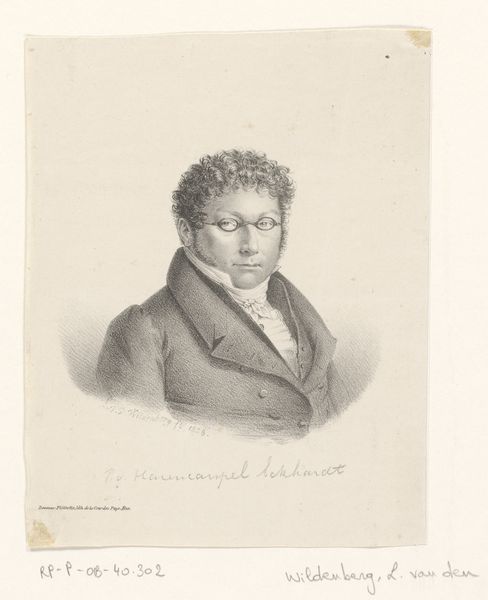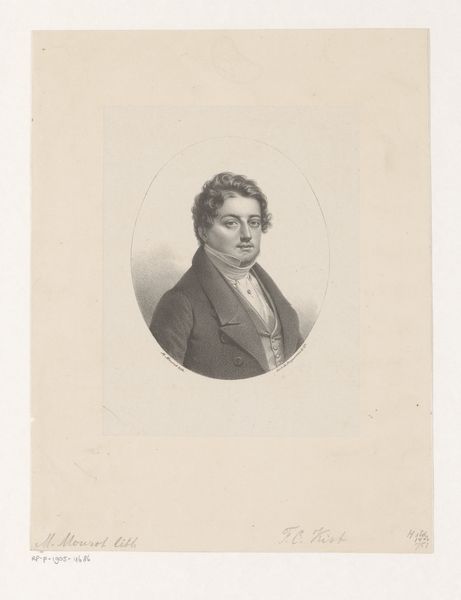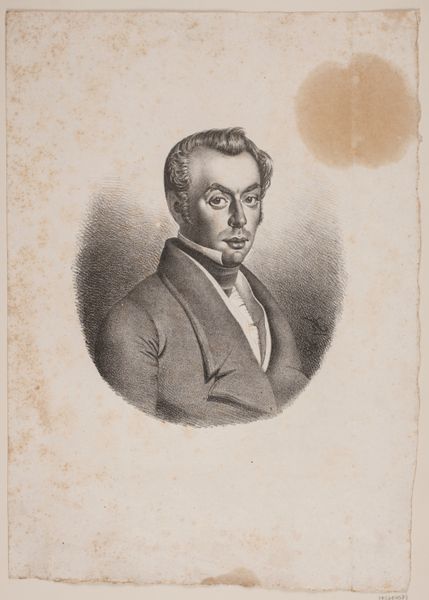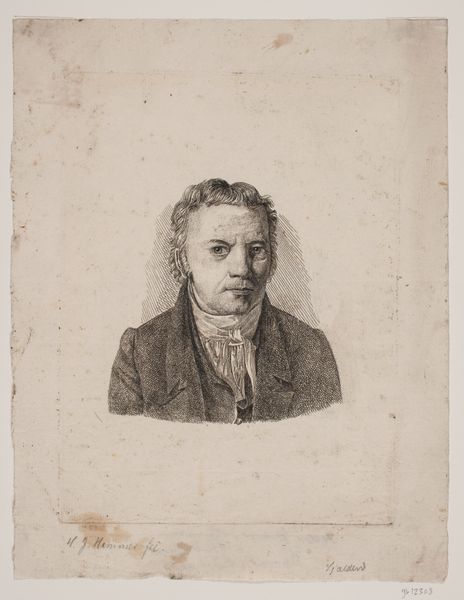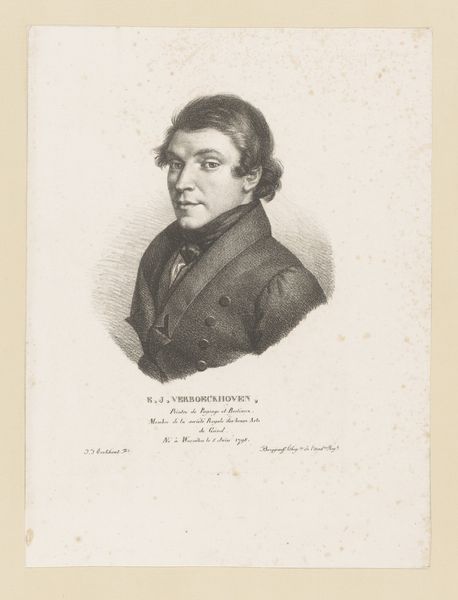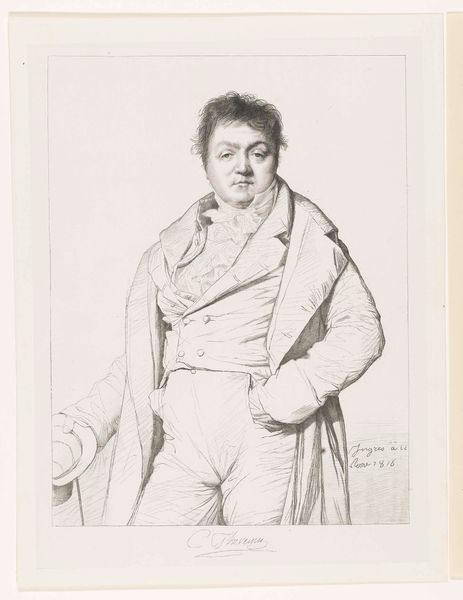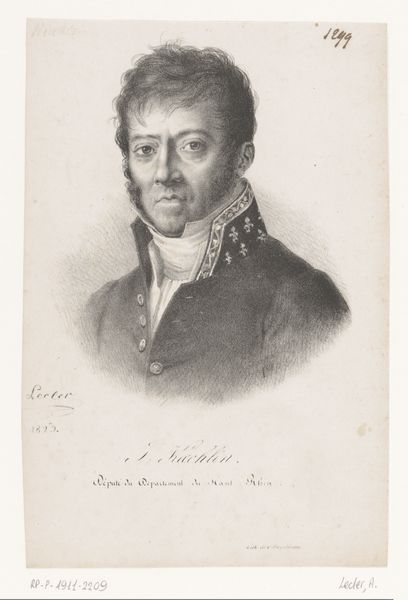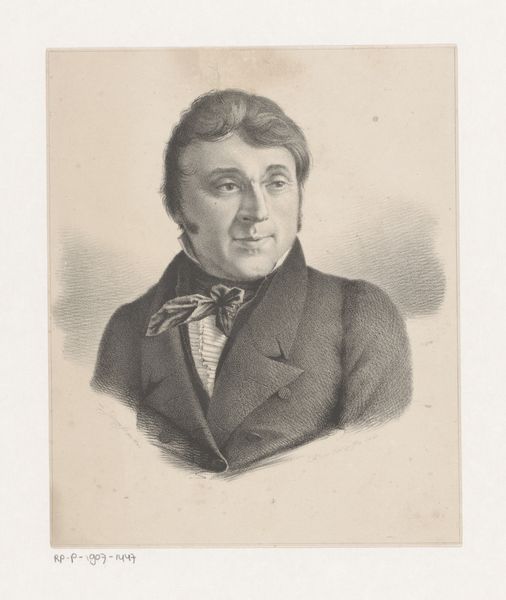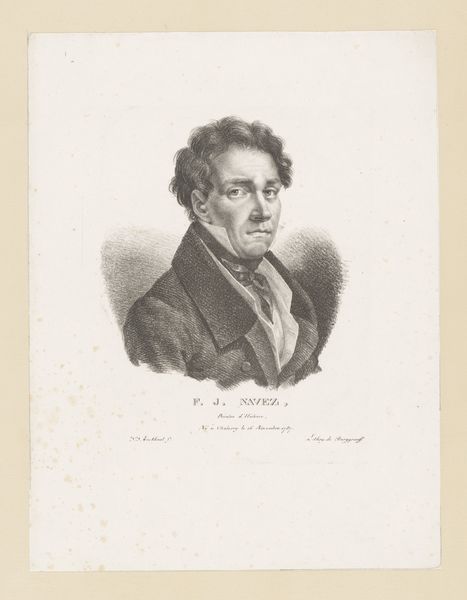
drawing, pencil
#
portrait
#
pencil drawn
#
drawing
#
pencil sketch
#
caricature
#
portrait reference
#
pencil drawing
#
pencil
#
portrait drawing
#
academic-art
Dimensions: height 485 mm, width 355 mm
Copyright: Rijks Museum: Open Domain
Curator: Before us, we have a drawing titled "Portret van Hendrik Jan Nassau" attributed to Carel Christiaan Antony Last, dating from before 1839. It's currently held here at the Rijksmuseum. Editor: The first thing that strikes me is its intimacy. The soft shading achieved with pencil creates a gentle, almost contemplative mood. It feels like we're observing a private moment, despite the formality of the subject's attire. Curator: It's a meticulously crafted portrait executed in pencil, revealing the artist's skillful manipulation of a humble material to depict the textures of fabric and even the subtle sheen on the glasses. We can see the labor and time involved in layering the graphite. Consider also how access to high quality drawing materials shaped the possibility of such work in this era. Editor: Indeed. Notice how the glasses, though seemingly modern, amplify the sitter's character. The lenses seem to enlarge the eyes, making them intensely focused. Perhaps symbolizing intellect, foresight, or even a hint of the eccentric? The slightly askew bowtie adds a similar layer, it's not quite perfect and contributes a touch of individuality against the conventional attire. Curator: And that attire is crucial, it communicates status and respectability. But I'm also drawn to the way the drawing itself was circulated and consumed, likely existing as part of a printmaking economy where copies would proliferate images and ideals among wider society. What paper was used? What were the conditions of production and reception? These things mattered. Editor: Looking at the larger picture, this portrait exists within a long lineage of depicting figures of power and influence, of course. But there’s a fascinating contrast here – the accessibility of the medium, pencil on paper, paired with the depiction of an obviously privileged individual. Curator: Yes, that interplay is key to how art creates and reinforces hierarchies of both power and taste, what Bourdieu called cultural capital. We can ask questions such as: who could afford to commission or purchase such works, and what did owning these items say about your place in the world? Editor: So, through the symbols within, and a deeper look at materials and creation, we can unpack social conditions represented within a simple, if skillful portrait. Curator: Exactly, it shows how art isn't just about beauty, it's interwoven into social life through material existence, systems of production, and our interactions with the piece as audience members today.
Comments
No comments
Be the first to comment and join the conversation on the ultimate creative platform.



